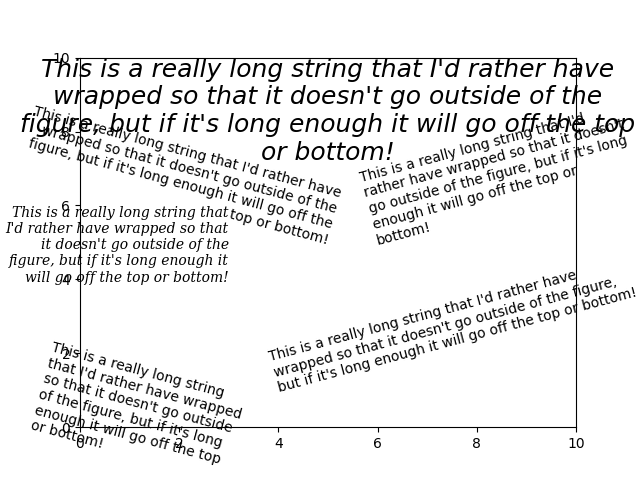Noter
Cliquez ici pour télécharger l'exemple de code complet
Texte d'habillage automatique #
Matplotlib peut envelopper le texte automatiquement, mais s'il est trop long, le texte sera de toute façon affiché légèrement en dehors des limites de l'axe.
Remarque : le retour à la ligne automatique ne fonctionne pas avec
. Le paramètre "serré" redimensionne le canevas pour s'adapter à tout le contenu et se produit avant l'habillage. Cela affecte les
blocs-notes IPython et Jupyter où le paramètre en ligne est utilisé par défaut lors de l'enregistrement de l'image à incorporer.savefig(..., bbox_inches='tight')%matplotlib inlinebbox_inches='tight'

import matplotlib.pyplot as plt
fig = plt.figure()
plt.axis([0, 10, 0, 10])
t = ("This is a really long string that I'd rather have wrapped so that it "
"doesn't go outside of the figure, but if it's long enough it will go "
"off the top or bottom!")
plt.text(4, 1, t, ha='left', rotation=15, wrap=True)
plt.text(6, 5, t, ha='left', rotation=15, wrap=True)
plt.text(5, 5, t, ha='right', rotation=-15, wrap=True)
plt.text(5, 10, t, fontsize=18, style='oblique', ha='center',
va='top', wrap=True)
plt.text(3, 4, t, family='serif', style='italic', ha='right', wrap=True)
plt.text(-1, 0, t, ha='left', rotation=-15, wrap=True)
plt.show()